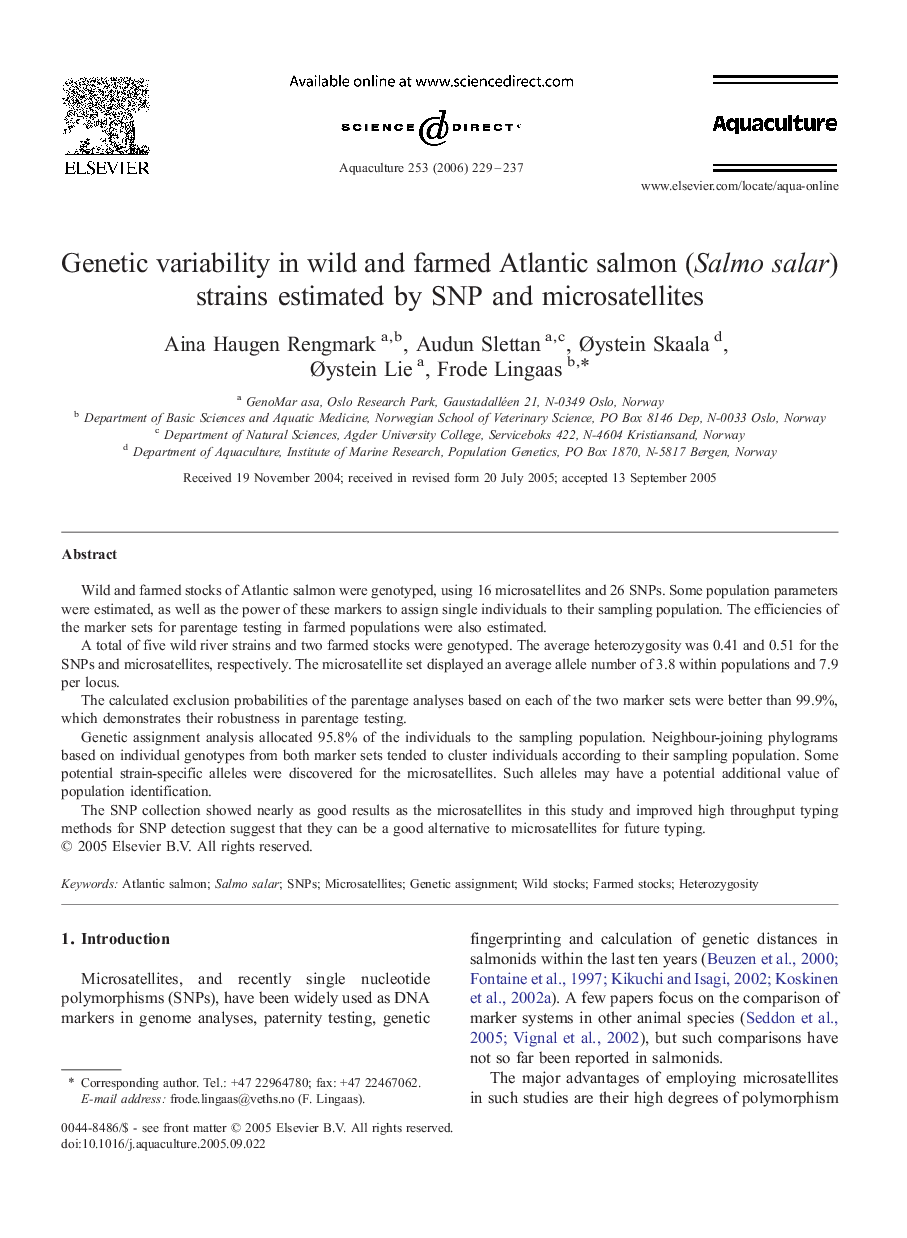| Article ID | Journal | Published Year | Pages | File Type |
|---|---|---|---|---|
| 2426226 | Aquaculture | 2006 | 9 Pages |
Wild and farmed stocks of Atlantic salmon were genotyped, using 16 microsatellites and 26 SNPs. Some population parameters were estimated, as well as the power of these markers to assign single individuals to their sampling population. The efficiencies of the marker sets for parentage testing in farmed populations were also estimated.A total of five wild river strains and two farmed stocks were genotyped. The average heterozygosity was 0.41 and 0.51 for the SNPs and microsatellites, respectively. The microsatellite set displayed an average allele number of 3.8 within populations and 7.9 per locus.The calculated exclusion probabilities of the parentage analyses based on each of the two marker sets were better than 99.9%, which demonstrates their robustness in parentage testing.Genetic assignment analysis allocated 95.8% of the individuals to the sampling population. Neighbour-joining phylograms based on individual genotypes from both marker sets tended to cluster individuals according to their sampling population. Some potential strain-specific alleles were discovered for the microsatellites. Such alleles may have a potential additional value of population identification.The SNP collection showed nearly as good results as the microsatellites in this study and improved high throughput typing methods for SNP detection suggest that they can be a good alternative to microsatellites for future typing.
